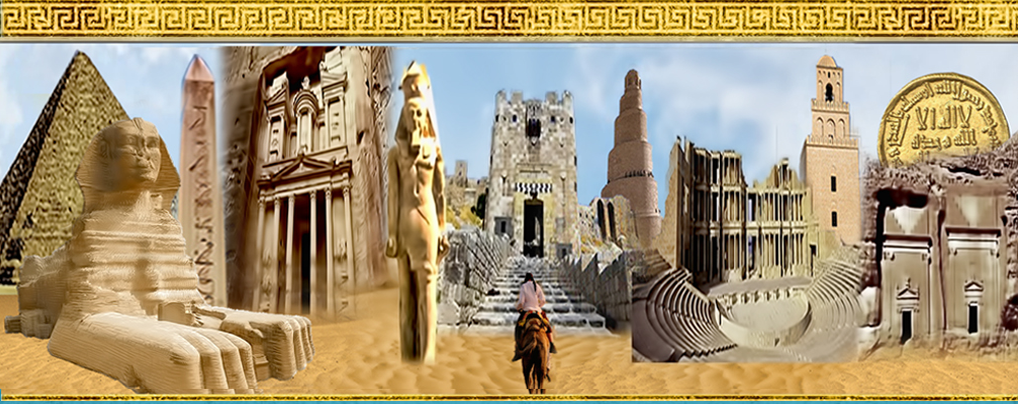Journal of the General Union of Arab Archaeologists

Abstract
[En]This paper discusses the cultural loss of five Egyptian mosques in Egypt due to their renovation. While illicit digging, encroachment, and real estate unplanned development has damaged ancient Egyptian heritage, in particular in the last eleven years, Egypt has a long history of faulty restorations of Islamic monuments, which include demolition, wholesome reconstruction, and unhistorical additions. Few of the original early Islamic monuments survive today, the oldest being the Nilometer on Rawḍa Island (AD 869), which dates to two hundred years after the Arab conquest of Egypt. Interventions in the capital Cairo are often subjected to media coverage and the scrutiny of the public, but in the provinces, violations are widespread and many botched restorations go virtually unnoticed. This paper discusses five Egyptian provincial mosques whose more or less recent restoration has had catastrophic results on the original buildings: al-Mitwally mosque in Ğirǧā (Sūhaǧ), Qimn al-ʿArūs mosque (Bāni Sūayf), Zaġhlūl and al-Maḥally mosques in Rāšid (Baḥayra), al-‘Amry mosque in Dumiyāt. The paper will briefly describe the appearance of these buildings, discuss their history based on the few primary (including historical photographs and accounts) and secondary sources (literature in English and Arabic), and report on an eyewitness survey of their current state carried out between 2018 and 2020, after restorations that have wiped away many of their intricate historic details. The lack of coordination between the Ministry of Endowments and the Ministry of Antiquities and Tourism has resulted in renovation instead of restoration for these mosques. This does not only affect the Islamic heritage of rural Egypt, but the urban fabric around those mosques accordingly. In the conclusions, the author proposes a way forward to overcome problems in the coordination and execution of restoration works and guarantee the functionality of the buildings for the communities they serve without damaging their historical features. First, the author proposes an implemented code as an addendum to the antiquities law that is enforced on all companies working in conservation.
(Ar)
ملاحظات على ترميم خمسة مساجد مصرية
يناقش هذا البحث الخسارة الثقافية لخمسة مساجد مصرية بسبب علميات الترميم التي طرأت عليها، في الوقت الذي فيه الحفر الخلسة والتعديات والتطوير العقاري الغير مخطط يضر بتراث مصر وبالأخص في الاحدى عشر عام الماضية، ولکن للأسف يوجد العديد من الترميمات التي تمت التي تؤثر على موثوقية الآثار الإسلامية لأنها لا تقوم بأعمال ترميم ولکن بإعادة بناء واضافات غير تاريخية. لم يتبق اليوم سوى القليل من الآثار الإسلامية المبکرة، وأقدمها هو مقياس النيل في جزيرة الروضة والذي يؤرخ لعام ٨٦٩ م، والذي يعود تاريخه الى مائتي عام بعد الفتح العربي لمصر. غالباً تخضع عمليات الترميم في العاصمة القاهرة لتدقيق بسبب التغطية الإعلامية ووعي الجمهور القاهري، ولکن في المحافظات تنتشر الانتهاکات على نطاق واسع والعديد من عمليات الترميم الغير جيدة تمر دون أن يلاحظها أحد تقريباً. لذلک تناقش هذه الورقة البحثية خمسة من مساجد المحافظات المصرية التي خضعت لعمليات ترميم مؤخراً وکانت نتائجها کارثية على المباني الأصلية وهم: مسجد المتولي بجرجا في محافظة سوهاج، ومسجد قمن العروس في محافظة بني سويف، ومسجد زغلول والمحلي في رشيد والعامري في دمياط. يصف هذا البحث بإيجاز العناصر المعمارية لهذه المباني لبيان قيمتها التراثية وتناقش تاريخها استناداً إلى المصادر الأولية القليلة والمصادر الثانوية التي نشرت باللغتين الإنجليزية والعربية، وتقرير عن مسح لحالتها الحالية والتي أجريت في زيارات ميدانية بين عامي ٢٠١٨ و٢٠٢٠، بعد عمليات الترميم التي قضت على الکثير من التفاصيل التاريخية المعقدة. أدى عدم التنسيق بين وزارة الأوقاف ووزارة الآثار والسياحة إلى إعادة بناء هذه المساجد بدلاً من ترميمها، وذلک لا يؤثر فقط على التراث الإسلامي لريف مصر، ولکن على النسيج العمراني حول المساجد، في الاستنتاجات، يقترح المؤلف طريقة للمضي قدماً للتغلب على المشاکل في تنسيق وتنفيذ أعمال الترميم وضمان وان تقوم بوظيفتها دون الإضرار بسماتها التاريخية وموثوقيتها.
Recommended Citation
Hanna, Monica
(2021)
"NOTE ON THE RESTORATION OF FIVE EGYPTIAN MOSQUES,"
Journal of the General Union of Arab Archaeologists: Vol. 6:
Iss.
2, Article 11.
Available at:
https://digitalcommons.aaru.edu.jo/jguaa/vol6/iss2/11

